Heirloom dishes shine in Pampanga food fest
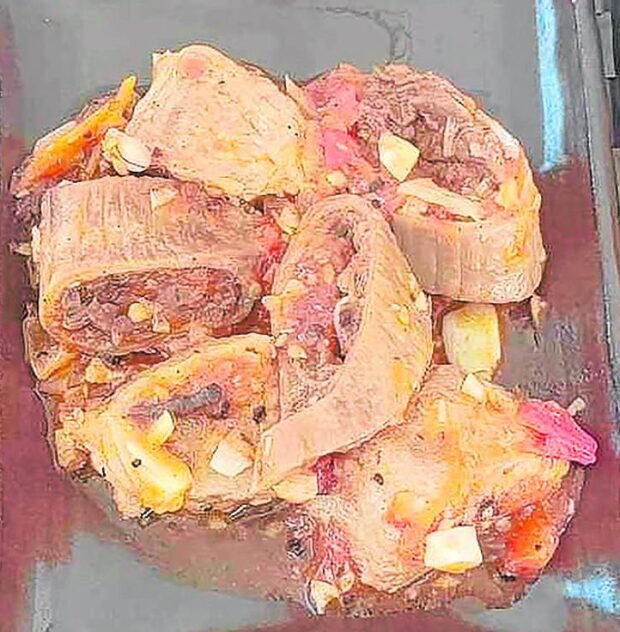
SAVORY | “Poklo” is a rare dish because the flavorful meat is derived from the breasts of a sow that
died while or after giving birth. (Photo by TONETTE T. OREJAS / Inquirer Central Luzon)
CITY OF SAN FERNANDO, Pampanga, Philippines —“Poklo,” a rare food in Pampanga, was rediscovered during a cook-off of heirloom dishes in the first Manyaman Festival held last week for the 452nd anniversary of the inauguration of the province by Spain.
And the cook who prepared the winning dish, Jeffrey Sibug, blurted out that he did not expect to win just after painter-chef Claude Tayag handed him a trophy. Cooks from 16 towns and three cities prepared iconic viands, Sibug thought.
But poklo was a hands-down winner for Tayag, chef Lillian Borromeo, and Robby Tantingo, director of the Holy Angel University’s Center for Kapampangan Studies.
For one, the meat is difficult to obtain, coming only from the breasts of a sow that had died after birthing its piglets, explained Sibug, 36, and a former butcher at Monterey Food Corp.
He learned to cook the dish from Apung Quinang (Aquilina Dimalanta), his paternal grandmother who sold meat in a stall at Guagua public market in Barangay San Pedro. His father Rolando cooked poklo, too, when breasts were available from sow undergoing difficult deliveries.
READ: In Pampanga, all-men parade sparks joy on New Year’s Day
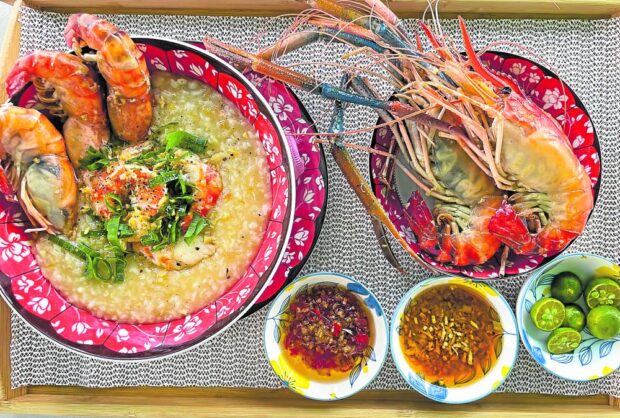
LEGACY | Kapampangan dishes learned from grandparents and parents have survived through time, passed down to generations, and enjoyed until now, thanks to a culture of sharing knowledge within families and clans. (Photo by TONETTE T. OREJAS / Inquirer Central Luzon)
Like his elders, Sibug followed a three-step process.
The first step required him to boil the breasts in salt, pepper, “gulgul” (aromatic bag of thyme, bay leaves and oregano) and other herbs. The breasts, cut in elongated pieces, were strained to dry for hours. In the second step, the meat was sauteed like “arobu” (white adobo, without soy sauce), undergoing “kiping” (caramelization) until dry. In the third step, the sauteing was repeated but fresh tomatoes, cut and boiled to bits, were added.
In all the steps, the milk hardened and turned a bit sticky, giving the viand a sweet and sour taste.
Sibug and his younger sister Shiela, who professed to love cooking, have not been selling poklo in restaurants or by orders.
“But if we do, our father advised us to keep the price affordable to the ordinary people,” he said.
Sasmuan’s seafood stew dubbed “sarzuela ning malat,” landed second place, while San Luis’ rice porridge with freshwater lobster, simply called “lelut ulang,” finished third.
READ: Pampanga’s giant lanterns go green
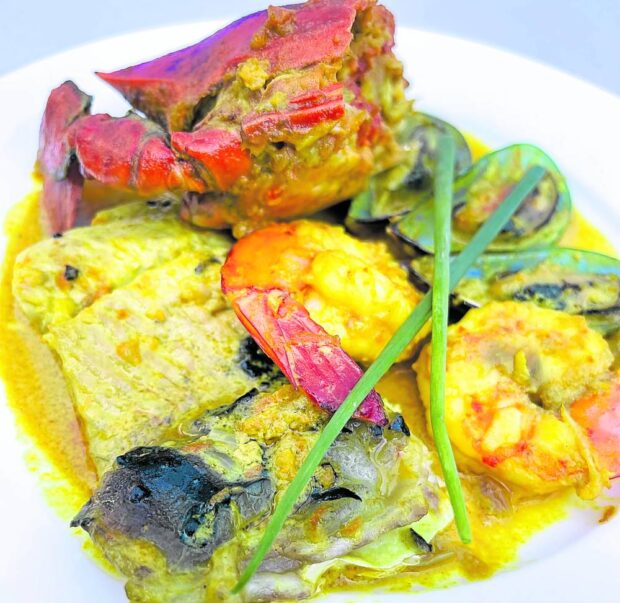
(Photo by TONETTE T. OREJAS / Inquirer Central Luzon)
Local fare
Home cooks representing Angeles City prepared “tidtad pata king kamias” (pork leg and blood stew in kamias); Arayat, “pesang dalag” (mudfish stew in ginger); Bacolor, “yubyub” (steamed ground pork with vegetables); Candaba, “kilayin” (prok and liver stew in vinegar); Floridablanca, “sabo bule” (kidney beans in thin tomato broth); Lubao, “lutong sale” (native chicken in lemongrass); City of San Fernando, “morcon” (meat roll with sausage, vegetables, cheese and egg); Macabebe, “kubang baka” (beef cooked in coconut milk and spices); Magalang, “pesang bulig” (mudfish stew in ginger); Masantol, “kubang itik” (duck cooked in coconut milk and spices); Minalin, “lutong toyo manok” (chicken cooked in soy sauce); Porac, “labong” (bamboo shoots) with native chicken; Mabalacat City, “hamonadong babi” (sweetened pork); San Simon, “tinolang tugak” (frog meat in ginger broth); Sta. Ana, “embotido” (meatloaf); and Sta. Rita, “asadong matua” (pork rump slowly cooked in tomatoes, soy sauce and bay leaf).
In front of the judges, cooks shared the provenance of their dishes.
Karina Licup of Porac recalled that her father, Marcelo Canlas, collected all the ingredients from the backyard except the bamboo shoots that he got from his Aeta friends in the town’s mountains.
Leonor Gomez of Mabalacat said it was because of scarce funds to buy first-class ham that her father cooked his version of sweetened pork.
Tugak thrived in flood-prone San Simon villages so much so that it became the meat for stews and soups, explained Marl Angelo Mangalino.
The asadong matua of Ma. Beatriz Manalo was “amana” (inherited) from her grandfather.
Candaba’s kilayin was cooked in slow fire with enough vinegar to last through the regular flooding season.
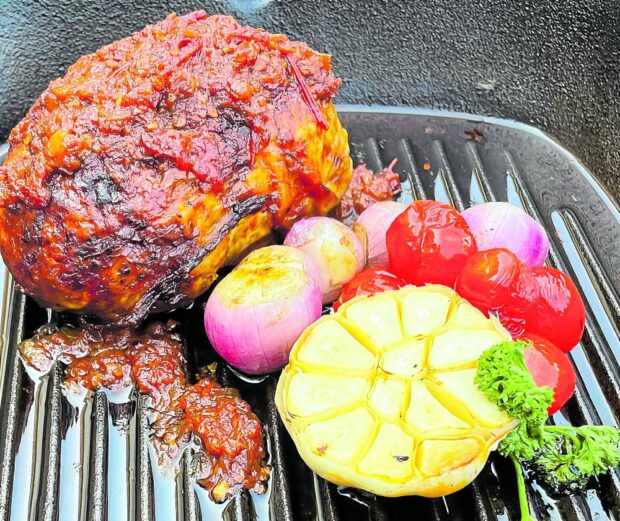
(Photo by TONETTE T. OREJAS / Inquirer Central Luzon)
Rediscovery
After hearing the stories of the cooks, Tayag said heritage food appeared to have no codified recipes. It also practiced some restrictions based on religion or diets and used what was readily available.
Rediscovering heritage dishes is not a new effort in Pampanga. Borromeo spearheaded the Kurang-kurangan Kapaskuan in the annual Sinukwan Festival, a private sector-led celebration of Pampanga Day.
Joined by young cooks, some deconstruct the dishes or retain the original recipes.
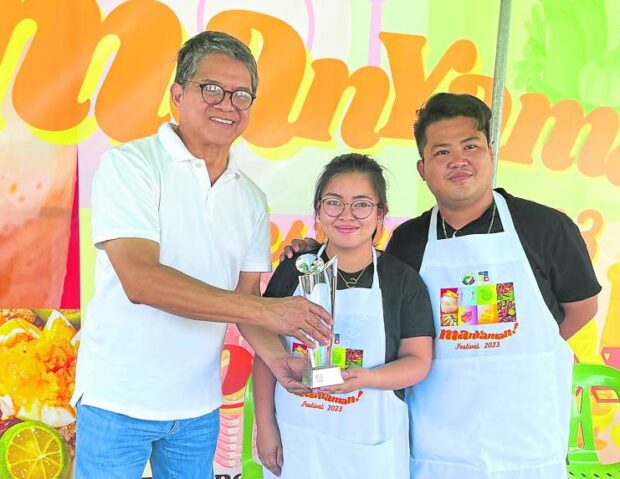
CHAMP | Painter and chef Claude Tayag awards the first prize trophy to Jeffrey Sibug and his sister Shiela who cooked poklo in the first Manyaman Festival for the 452nd foundation anniversary
of Pampanga this month. (Photo by TONETTE T. OREJAS / Inquirer Central Luzon)
The arubo, several times mistaken as adobo, had its own day in the Manyaman Festival, with young culinary students cooking the original dish or their own versions of it. Arubo was probably among the prehistoric foods that early Kapampangans preserved through salt, vinegar, sour fruits or leaves, said Tayag.
The Manyaman Festival and the Kurang-Kurangan Kapaskuan both preserve and promote the culinary heritage of Pampanga, said Board Member Mylyn Pineda-Cayabyab, one of the prime movers of the Manyaman event.
“No organization has officially given Pampanga the title culinary capital of the Philippines but locally and overseas, the honor and popular acclaim have stuck because many Kapampangan cooks value their heritage of delicious food,” said Cayabyab. “The Manyaman Festival has to be done yearly.”